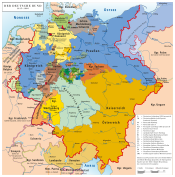
Hesse or Hessia, officially the State of Hesse, is a state in Germany. Its capital city is Wiesbaden, and the largest urban area is Frankfurt, which is also the country's principal financial centre. Two other major historic cities are Darmstadt and Kassel. With an area of 21,114.73 square kilometers and a population of over six million, it ranks seventh and fifth, respectively, among the sixteen German states. Frankfurt Rhine-Main, Germany's second-largest metropolitan area, is mainly located in Hesse.

This article is about the history of Hesse. Hesse is a state in Germany.

The Landgraviate of Hesse-Kassel, spelled Hesse-Cassel during its entire existence, was a state of the Holy Roman Empire. The state was created in 1567 when the Landgraviate of Hesse was divided upon the death of Philip I, Landgrave of Hesse. His eldest son William IV inherited the northern half of the Landgraviate and the capital of Kassel. The other sons received the Landgraviates of Hesse-Marburg, Hesse-Rheinfels and Hesse-Darmstadt.

The House of Hesse is a European dynasty, directly descended from the House of Brabant. They ruled the region of Hesse, one branch as prince-electors until 1866, and another branch as grand dukes until 1918.

The North German Confederation was initially a German military alliance established in August 1866 under the leadership of the Kingdom of Prussia, which was transformed in the subsequent year into a confederated state that existed from July 1867 to December 1870. A milestone of the German Unification, it was the earliest continual legal predecessor of the modern German nation-state known today as the Federal Republic of Germany.
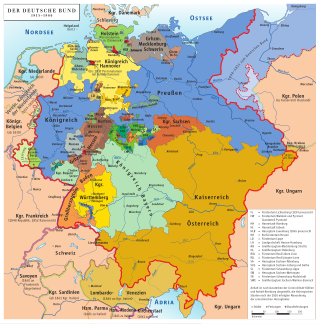
The states of the German Confederation were member states of the German Confederation, from 20 June 1815 until 24 August 1866.

The Province of Hesse-Nassau was a province of the Kingdom of Prussia from 1868 to 1918, then a province of the Free State of Prussia until 1944.
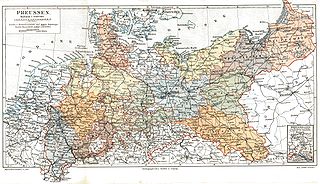
The Provinces of Prussia were the main administrative divisions of Prussia from 1815 to 1946. Prussia's province system was introduced in the Stein-Hardenberg Reforms in 1815, and were mostly organized from duchies and historical regions. Provinces were divided into several Regierungsbezirke, sub-divided into Kreise (districts), and then into Gemeinden (townships) at the lowest level. Provinces constituted the highest level of administration in the Kingdom of Prussia and Free State of Prussia until 1933, when Nazi Germany established de facto direct rule over provincial politics, and were formally abolished in 1946 following World War II. The Prussian provinces became the basis for many federal states of Germany, and the states of Brandenburg, Lower Saxony, and Schleswig-Holstein are direct successors of provinces.

The Grand Duchy of Hesse and by Rhine was a grand duchy in western Germany that existed from 1806 to 1918. The grand duchy originally formed from the Landgraviate of Hesse-Darmstadt in 1806 as the Grand Duchy of Hesse. It assumed the name Hesse und bei Rhein in 1816 to distinguish itself from the Electorate of Hesse, which had formed from neighbouring Hesse-Kassel. Colloquially, the grand duchy continued to be known by its former name of Hesse-Darmstadt.

The Landgraviate of Hesse-Darmstadt was a State of the Holy Roman Empire, ruled by a younger branch of the House of Hesse. It was formed in 1567 following the division of the Landgraviate of Hesse between the four sons of Landgrave Philip I.

The Landgraviate of Hesse was a principality of the Holy Roman Empire. It existed as a single entity from 1264 to 1567, when it was divided among the sons of Philip I, Landgrave of Hesse.

The County of Katzenelnbogen was an immediate state of the Holy Roman Empire. It existed between 1095 and 1479, when it was inherited by the Landgraves of Hesse.
The term Upper Hesse originally referred to the southern possessions of the Landgraviate of Hesse, which were initially geographically separated from the more northerly Lower Hesse by the County of Ziegenhain.
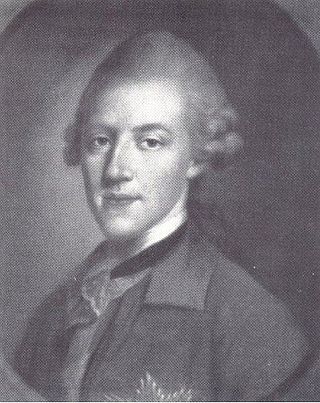
Frederick V Louis William Christian, Landgrave of Hesse-Homburg was from 1751 to his death landgrave of Hesse-Homburg.
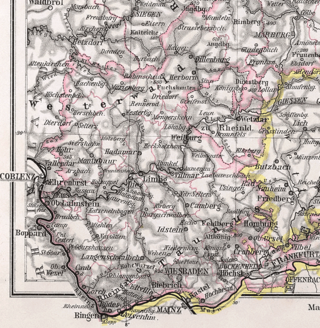
The Wiesbaden Region was one of three administrative regions from which the state of Hesse was formed in 1945.

The Electorate of Hesse, also known as Hesse-Kassel or Kurhessen, was a landgraviate whose prince was given the right to elect the Emperor by Napoleon. When the Holy Roman Empire was abolished in 1806, its prince, William I, chose to retain the title of Elector, even though there was no longer an Emperor to elect. In 1807, with the Treaties of Tilsit, the area was annexed to the Kingdom of Westphalia, but in 1814, the Congress of Vienna restored the electorate.

Louis William, Landgrave of Hesse-Homburg, was Landgrave of Hesse-Homburg from 1829 until his death.

Ferdinand Heinrich Friedrich was a German nobleman and the last landgrave of Hesse-Homburg.

The Central German Commercial Union was a customs union created in 1828 by several small states within the German Confederation. It was formed in response to the creation of the Prussian-Hessian Customs Union, and was intended as an alternative to a union dominated by the Kingdom of Prussia. The key proponent of the union was the Kingdom of Saxony and most of the smaller states of Northern Germany were initially members, but the union failed to implement any concrete measures and was a dead letter by 1833. Most members joined the Prussian-led German Zollverein in 1834.






















